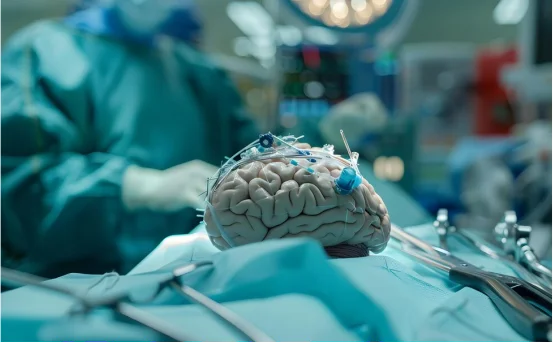Diagnosis of Dialysis is a life-saving treatment that replicates key kidney functions when the kidneys can no longer work effectively. But dialysis doesn’t happen out of the blue there’s a detailed process of diagnosis that determines if and when a patient needs this therapy.
Kidneys are vital organs that filter waste, excess fluids, and toxins from the blood. They also help regulate blood pressure, produce red blood cells, and maintain electrolyte balance. However, when the kidneys begin to lose their ability to function whether due to chronic disease, acute injury, or genetic conditions the body can accumulate harmful substances that threaten overall health. This is where diagnosis of dialysis becomes a necessary intervention.
What Is Dialysis?
Dialysis is a medical procedure used to remove waste, toxins, and excess fluid from the blood when the kidneys fail to do so. There are two main types of dialysis :-
-
Hemodialysis :- Blood is filtered using a dialyzer (artificial kidney) and a dialysis machine.
-
Peritoneal Dialysis :- The lining of the abdominal cavity (peritoneum) acts as a natural filter with the help of a dialysis solution.
Both methods serve the same purpose: to maintain chemical balance in the body and prevent life-threatening complications due to kidney failure.
When Is Dialysis Required?
Dialysis becomes necessary when a person reaches end-stage renal disease (ESRD) or Stage 5 chronic kidney disease (CKD). At this stage, the kidneys function at only 10-15% of their normal capacity.
However, the decision to start dialysis isn’t based on a single test. Doctors use a combination of laboratory results, symptoms, and medical history to diagnose the need for dialysis.
Key Diagnosis of Dialysis
Here are the most common medical factors used to determine if a person needs dialysis :-
- Estimated Glomerular Filtration Rate (eGFR)
-
eGFR is a crucial blood test that measures how well the kidneys are filtering waste.
-
A normal eGFR is 90 or higher.
-
Dialysis is often considered when eGFR drops below 15 mL/min/1.73 m², especially if symptoms are present.
- Blood Urea Nitrogen (BUN) and Creatinine Levels
-
BUN and serum creatinine are waste products filtered by the kidneys.
-
High levels indicate impaired kidney function.
-
Creatinine levels above 8 mg/dL (in some cases even earlier) can prompt dialysis, especially in symptomatic patients.
- Fluid Overload
-
Swelling in the legs, shortness of breath, and high blood pressure may indicate fluid retention.
-
If fluid overload becomes unmanageable through medication, dialysis is required.
- Electrolyte Imbalance
-
High potassium levels (hyperkalemia) can lead to dangerous heart arrhythmias.
-
Dialysis is an immediate treatment option if this condition is not corrected by medications.
- Severe Uremic Symptoms
Uremia is a condition where waste builds up in the body due to kidney failure. Symptoms include :-
-
Fatigue
-
Confusion
-
Loss of appetite
-
Nausea and vomiting
-
Metallic taste in the mouth
-
Seizures or coma (in extreme cases)
These symptoms indicate urgent need for dialysis.
Common Symptoms That Lead to Dialysis of Diagnosis
Many patients reach dialysis after experiencing long-term symptoms that progressively worsen. Recognizing these early can lead to timely diagnosis :-
-
Persistent fatigue and weakness
-
Swelling in feet, ankles, or face
-
Shortness of breath
-
Itchy or dry skin
-
Frequent urination, especially at night
-
Blood in urine or foamy urine
-
Difficulty concentrating
-
High blood pressure that’s difficult to control
These symptoms are red flags that require diagnostic testing.
Diagnostic Tests Before Starting Dialysis
A nephrologist (kidney specialist) will order a range of tests to determine kidney function and the body’s overall health. These may include:-
- Blood Tests
-
eGFR (estimated Glomerular Filtration Rate)
-
Serum Creatinine
-
BUN (Blood Urea Nitrogen)
-
Electrolytes: Potassium, sodium, calcium, phosphate
-
Hemoglobin and hematocrit (to check for anemia)
- Urine Tests
-
Urinalysis to detect protein, blood, or infection
-
24-hour urine collection to assess how much waste is being excreted
- Imaging Tests
-
Ultrasound or CT scan of the kidneys to detect blockages, cysts, or shrinkage
-
These tests help confirm structural damage
- Kidney Biopsy (in some cases)
-
A small sample of kidney tissue is examined under a microscope to identify the cause of kidney failure.
Preparing for Dialysis After Diagnosis
Once a patient is diagnosis of dialysis, the care team will guide them through preparation steps, which include :-
- Vascular Access Surgery (for Hemodialysis)
-
A fistula, graft, or central line is created for blood access.
-
This must be planned weeks in advance to allow healing.
- Peritoneal Dialysis Catheter Placement
-
A soft tube is surgically placed in the abdomen for fluid exchange.
- Patient Education
-
Patients are educated about the type of dialysis, risks, benefits, dietary changes, and home care routines.
Importance of Early Diagnosis
Timely diagnosis of dialysis problems allows patients to :-
-
Delay or prevent dialysis through medication and lifestyle changes
-
Plan dialysis access early, reducing complications
-
Choose the right dialysis method suited to their lifestyle
-
Prevent emergency dialysis which is more risky and stressful
Many people live for years in early stages of kidney disease without symptoms. Routine kidney function tests are vital for people with :-
-
Diabetes
-
High blood pressure
-
A family history of kidney disease
-
Heart disease
Living with Dialysis: Post-Diagnosis Life
While diagnosis of dialysis is a major change, many people live full, active lives after starting treatment. The key is :-
-
Regular follow-ups
-
Adhering to diet and fluid restrictions
-
Monitoring symptoms
-
Staying informed
Patients are also evaluated for kidney transplant as a long-term solution when appropriate.
Conclusion
The diagnosis of dialysis is a critical step in managing end-stage kidney disease. It is not just about numbers on a lab report it involves a combination of medical tests, patient symptoms, and overall health status. Early detection, accurate diagnosis, and proper planning can make a significant difference in a patient’s quality of life.























